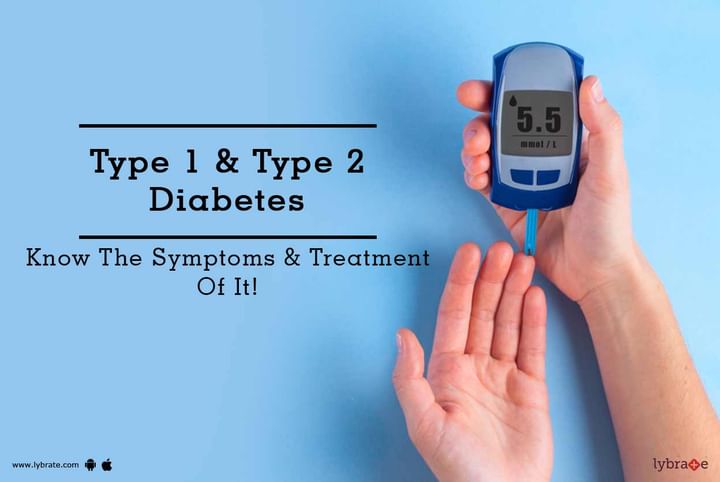Type 1 & Type 2 Diabetes - Know The Symptoms & Treatment Of It!
There are a number of lifestyle ailments that plague people around the world. Cardiovascular diseases, high cholesterol, hypertension and diabetes are just a few of them. Diabetes means your blood sugar level, called glucose, is too high. Blood glucose is the main kind of sugar found in your blood and is supposed to be your main source of energy. Glucose originates from the food that you eat and is additionally made in your liver and muscles. Your blood supplies glucose to the rest of your body's cells to use as a source of energy.
Your pancreas are situated between your stomach and spine. It assists with absorption of glucose from food and discharges a hormone called insulin, into your blood. Insulin helps your blood transport glucose to all your body's cells. In some cases your body doesn't make enough insulin or the insulin doesn't work the way it ought to. Glucose then stays in your blood and doesn't reach your cells.
The signs and symptoms of diabetes are as follows:
-
Being extremely thirsty
-
Urinating regularly
-
Feeling hungry
-
Feeling tired
-
Getting thinner without attempting
-
Wounds that mend gradually
-
Dry, bothersome skin
-
Feeling of pins and needles in your feet
-
Losing sensation in your feet
-
Hazy vision
Type 1 diabetes is found mostly in youngsters. In type 1 diabetes, your body does not make insulin or enough insulin because of the the body's vulnerable immune system. It protects you from contamination by getting rid of bacteria, infections, and other destructive substances.
Treatment for type 1 Diabetes:
-
Taking regular injections of insulin
-
Medicines as prescribed by the specialist
-
Healthy food choices
-
Being physically active
-
Controlling your circulatory strain levels. Circulatory strain is the pressure of blood flow inside your veins.
-
Controlling cholesterol levels
Type 2 diabetes can influence individuals at any age. It is known to affect moderately aged and elderly individuals. People who are overweight and inert are more prone to type 2 Diabetes.
Type 2 diabetes normally starts with insulin resistance, a condition that happens when fat, muscle and liver cells do not utilise insulin to supply glucose to the body's cells to draw energy. Accordingly, the body needs more insulin to help glucose enter the cells. At such an instance, the pancreas start producing more insulin. Over the long haul, the pancreas do not make enough insulin when glucose levels increase, for example, after meals. If your pancreas can no more make enough insulin, you should treat your type 2 diabetes.
Treatment for type 2 Diabetes:
-
Utilising diabetes prescriptions
-
Settling on solid food decisions
-
Being physically active
-
Controlling your circulatory strain levels
-
Controlling your cholesterol levels
-
Weight loss is the most important if you are overweight. Avoid junk food and sugar, exercise regularly and take medicines on-time.
- Regular follow-up to a physician is important



+1.svg)
